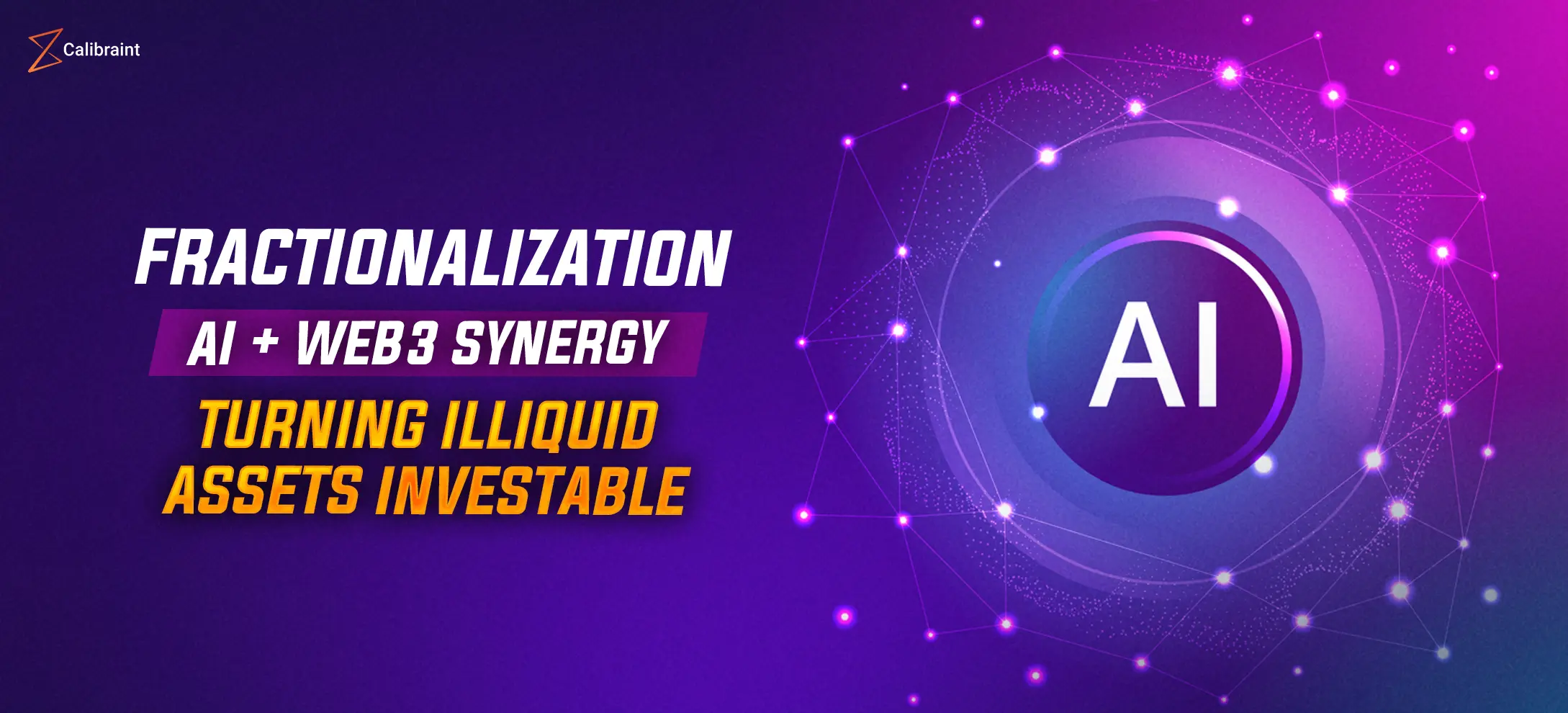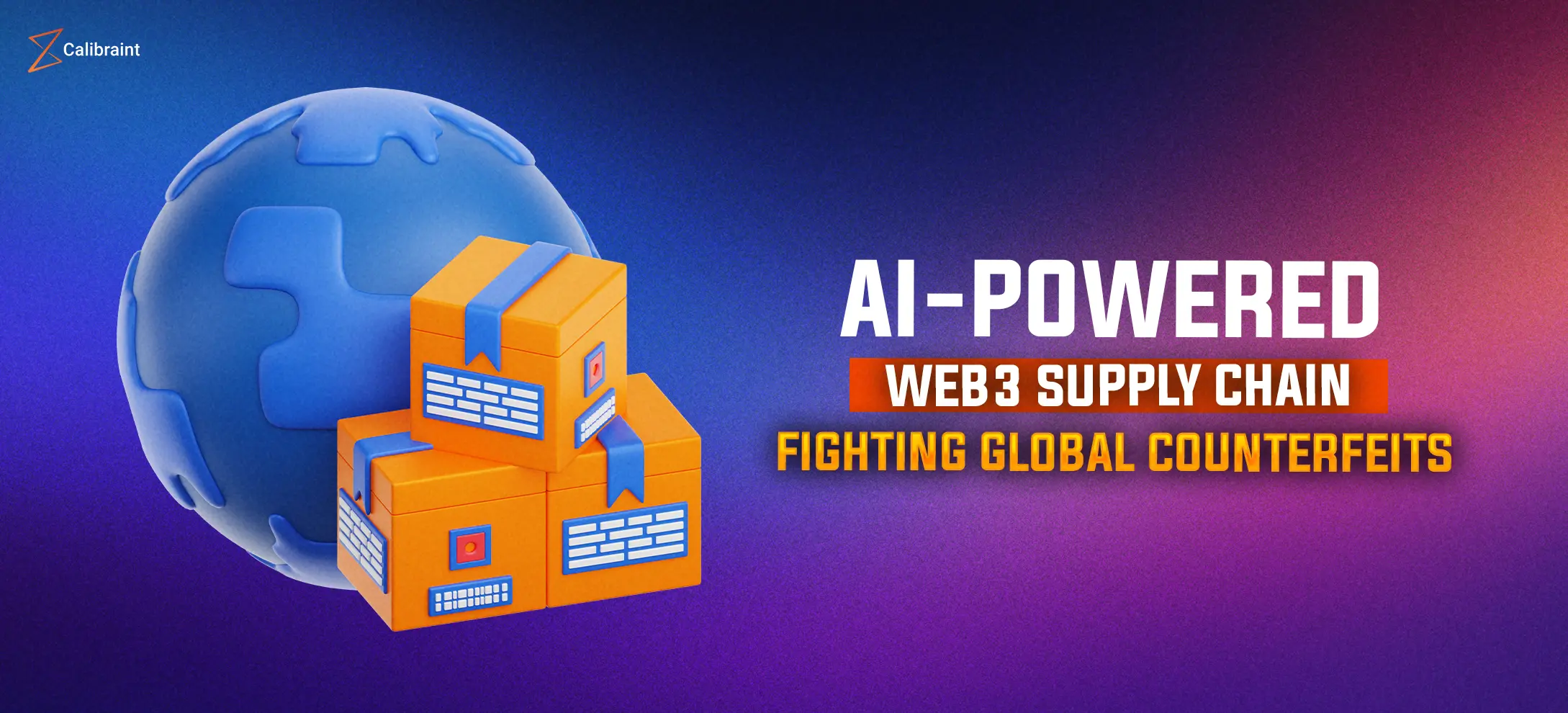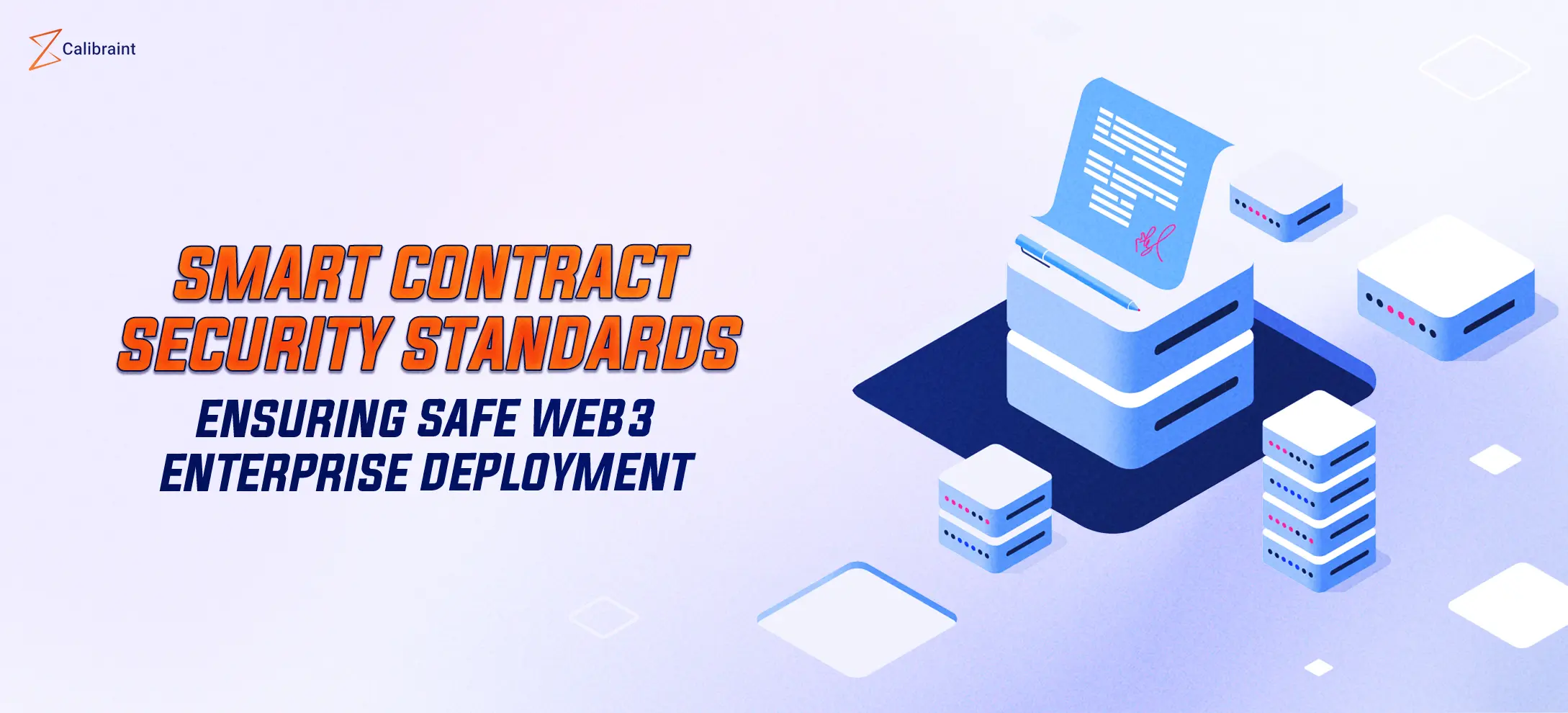What Are Web3 Development Services? A Complete Enterprise Guide
Calibraint
Author
October 10, 2025
Last updated: November 14, 2025

Defining “Web3 capabilities” is challenging for any enterprise. With procurement, legal, IT, and finance involved, traditional frameworks often overlook the full scope.
Web3 is not a typical IT project. You are not buying software to host. Rather, you create systems that carry value, such as money, assets, or customer data, but are beyond your control. These are structural decisions that alter the way your organization operates and interacts with its external ecosystems.
This guide explains the meaning of Web3 development services in modern enterprises. It outlines how to align them with strategic business objectives, leverage DeFi and NFT solutions effectively, and deploy blockchain infrastructure.
Reframing the Question: What Web3 Development Really Means
Stop thinking about smart contracts as code that runs on blockchain and NFTs as digital certificates. The vocabulary misleads you about what’s actually being built. Stop thinking about smart contracts as code that runs on blockchain. Stop thinking about NFTs as digital certificates.
Your current systems run on servers you control, databases you manage, and APIs you can shut down. The logic exists because you maintain it. Web3 developers engineer logic that exists independent of any single operator’s infrastructure.
That’s not a technical distinction. That’s an architectural one.
When a developer writes a smart contract for multi-party settlement, they’re not coding a payment processor. They’re encoding rules that all parties agree to follow, deployed to infrastructure that no single party controls. The contract executes because the network validates it, not because your company runs the servers. The business logic becomes protocol, not application.
This changes what “development” means. You’re not building features. You’re building economic mechanisms that operate autonomously once deployed.
Three Pillars That Define Modern Web3 Services
- Composability
You can build modular systems that plug into existing infrastructure or expand into new products and markets. Each component functions independently yet integrates seamlessly, allowing enterprises to evolve without overhauling the core architecture.
- Transparency
Every transaction and process is auditable. Stakeholders can verify actions without relying solely on centralized oversight. This level of traceability strengthens compliance and reinforces confidence in operations, particularly for DeFi and NFT solutions.
- Autonomy
Web3 reduces dependency on intermediaries. Systems operate reliably on their own, executing agreements and transferring value without continuous manual intervention. Autonomy is not about removing control but about reallocating it strategically so enterprises can focus on growth while maintaining oversight.
Web3 maintenance and support services play a critical role in sustaining these principles. Continuous monitoring, protocol upgrades, and operational safeguards ensure that composability, transparency, and autonomy remain intact as the ecosystem scales. When implemented effectively, blockchain solutions for enterprise growth become resilient and adaptive. They enable organizations to capture opportunities that traditional architectures cannot.
The Enterprise Value Lens: What Web3 Unlocks
Web3 development services are not just a technical upgrade. They reshape the way value flows, decisions are enforced, and stakeholders interact. When applied strategically, these solutions deliver tangible enterprise outcomes across four key dimensions.
Growth Multiplier
DeFi unlocks immediate capital for businesses. Tokenize assets like inventory for instant liquidity and working capital through lending protocols, avoiding equity dilution or debt covenants. Transform idle treasury funds into active revenue streams by earning yield in real-time across optimized lending protocols.
DeFi offers novel monetization models like fractional ownership, automated revenue sharing, and instant cross-border settlements. This accelerates capital velocity, reduces financial overhead, and maximizes asset efficiency.
Trust Multiplier
The infrastructure of blockchains offers free authentication of each transaction, movement of custody, and compliance check-ins to build the scalability of trust without the hiring of personnel. It allows real-time provenance in pharmaceutical supply chains, instant regulatory control, and makes transparency a competitive benefit.
There is automated reporting, reduced audit periods, and streamlined compliance in financial services. This trust multiplier makes compliance a strategic advantage, and partners and contracts that favor expedited verification will be attracted. Firms will be able to reallocate audit funds towards product development without compromising high standards of compliance.
Efficiency Multiplier
Smart contracts execute business logic the moment conditions are met. A supplier contract triggers payment automatically once delivery is confirmed cryptographically, and both parties see settlement in real time. Finance teams focus on strategic allocation instead of routine approvals.
Multi-party agreements that once took days now complete in seconds. Milestone payments are released when deliverables are verified on-chain. Inventory replenishes at predefined thresholds, with payment and confirmation handled by self-executing protocols.
Your operations scale without proportional overhead. Employee reimbursements, revenue shares, and creator royalties are processed automatically through embedded logic. The efficiency multiplier frees teams to build rather than administrate.
Transaction volume rises while administrative costs fall. Legal shifts from dispute resolution to partnership design. Operational leverage improves because execution is fully automated.
Engagement Multiplier
NFT-based loyalty programs transform customers into stakeholders by making points ownable, transferable tokens with secondary markets. Entertainment companies use NFTs for exclusive content and experiences, appreciating brand growth and generating royalties on resales, reducing marketing spend. Fashion brands can release digital authenticity certificates that confirm the provenance and enable the high-end resale markets.
Gaming firms enable users to gain interoperable in-game objects, which increase customer lifetime value and also reduce acquisition costs. This engagement multiplier stimulates evangelism since the ownership generates unpaid word-of-mouth marketing, which grows by network effects.
Inside Web3 Development Services
Modern Web3 development partners don’t sell dApp builds. They have designed four interconnected layers that work as an operational ecosystem. Each layer serves distinct business functions. Together, they create infrastructure that executes independently while remaining maintainable.
1. Infrastructure and Node Management
This is the reliability core. Enterprise-grade node orchestration ensures speed, uptime, and multi-chain compatibility. It allows a global supply network to validate shipments across chains without delay or data loss. The strength of this layer defines how confidently your business can scale decentralized operations.
2. Smart Contract Development
This is where logic becomes law. Smart contracts encode operational agreements directly into code, enabling real-time execution and verifiable outcomes. In trade finance, settlements occur automatically once delivery proofs are validated on-chain. Your financial processes move from paperwork to protocol, making them precise, transparent, and tamper-proof.
3. DeFi and NFT Solution Design
At the growth layer, tokenization becomes a strategy, not a novelty. DeFi solutions extend capital access and liquidity options, while NFT frameworks redefine ownership and engagement. Real estate portfolios can be fractionalized for global investors, and brand ecosystems can issue NFTs that carry both value and utility, creating genuine business assets instead of digital collectibles.
4. Web3 Maintenance and Support Services
Sustainability defines maturity. Ongoing Web3 maintenance keeps decentralized infrastructures secure, scalable, and aligned with evolving protocols. From smart contract audits to node monitoring and governance updates, this layer ensures your ecosystem performs reliably throughout its lifecycle.
From Proof-of-Concept to Proof-of-Growth
Every enterprise journey in blockchain follows a maturity curve. It is less about experimenting with technology and more about structuring a path that moves from testing to sustainable growth.
- Exploration: You begin by identifying use cases where blockchain creates measurable value. This stage is not about hype but about aligning business outcomes with realistic ROI. For some, it is tokenizing assets. For others, it is exploring DeFi and NFT solutions for business models that unlock new revenue channels.
- Pilot: Once use cases are defined, the next move is a pilot. This is where compliance checks, data flow analysis, and integration with existing systems are tested. The goal is to validate that blockchain for enterprise growth can operate alongside legacy infrastructure without disruption.
- Scale: Success in pilots leads to scale. At this stage, single-chain solutions evolve into cross-chain strategies, enabling higher throughput, broader liquidity access, and more resilient operations. This is where Web3 Development Services play their full role, combining technical depth with market reach.
- Govern: Growth is incomplete without governance. Enterprises must define tokenomics, establish policy frameworks, and align ecosystem partners. It is governance that prevents fragmentation and ensures continuity as usage grows.
Across all stages, one constant remains: Web3 maintenance & support services. Exploration and pilots may spark adoption, but continuity and trust depend on the reliability of systems over time. Monitoring, upgrades, and dedicated support are what allow enterprises to sustain growth after the initial momentum.
Why Leadership Alignment Matters More Than Code
Web3 adoption does not succeed on technical architecture alone. The real shift happens when leadership embraces a new way of thinking about ownership, interoperability, and stakeholder participation. Code can automate, but it is strategy that decides whether blockchain remains an experiment or evolves into a foundation for enterprise growth.
Growth strategies need to be redefined around tokenization and new value models. Financial structures must account for tokenized assets and programmable flows that move beyond conventional instruments. Technical leaders are required to design systems that are not just efficient but interoperable and resilient, supported by Web3 Development Services that scale with demand.
Engagement, too, must evolve from one-directional campaigns into ecosystems where customers are co-creators, not just end users. This alignment across strategy, technology, finance, and engagement makes Web3 adoption boardroom-relevant. Code can execute agreements, but it cannot create vision. Only aligned leadership can ensure that Web3 adoption serves enterprise growth rather than isolated innovation.
The Calibraint Perspective: Building for the Web3 Decade
Web3 adoption is not defined by features but by the ability to transform enterprise systems into resilient, scalable frameworks. This is where Calibraint’s Web3 Development Services stand apart. The priority is to design architectures that hold under pressure, embed security into every layer, and translate innovation into outcomes that matter for growth.
As a Web3 development company, we approach every engagement as a long-term partnership. The goal is to develop systems that enterprises can rely on to evolve with the market. Our strategies are not linked to a specific technology cycle but are prepared for the future.
Calibraint
Author
October 10, 2025
Last updated: November 14, 2025



























